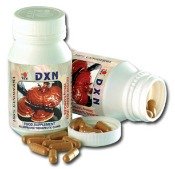Different Types of Leukemia: Acute and Chronic
There are over a dozen different types of leukemia. They are classified according to: how fast they worsen and the kind of white blood cells (WBCs) they affect. It can either be acute or chronic. The acute and chronic types can also be either myelogenous or lymphocytic. The symptoms are the same but for the acute type, they are immediate and can make you feel sick right away.
1. Acute
It is characterized by blood-forming cells that are immature. These immature cells reproduce and accumulate very rapidly.
Urgent treatment is required for acute leukemia because they worsen very fast. The acute type can ravage your body within a few weeks or months. Nose bleeding is one of the signs.
2. Chronic
It is characterized by blood-forming cells that are mature but are still damaged or abnormal.
The chronic type grows slowly and may not cause symptoms for years. It also affects older people more often.
Different leukemic types are also classified based on the white blood cells that are reproducing out of control. Acute and chronic leukemic cells can either be:
a) Myelogeneous
If it's myelogenous, the abnormal white blood cells are either the bacteria-killing cells called granulocytes or the macrophage-forming cells known as monocytes.
b) Lymphocytic or lymphoblastic
If it's lymphocytic or lymphoblastic, the abnormal white blood cells are the bone marrow lymphocytes.
Most Common Types of Leukemia Cells

Among the over a dozen different types of leukemia, the most common types include only four. They are . . .
1) Acute Lymphoblastic or ALL
ALL leukemia is most common in children. It can also affect adults but only rarely. It often happens to children aged 15 years old or younger.
Acute leukemic cells develop in the bone marrow, the thymus and the lymph nodes.
2) Acute Myelogenous or AML
AML develops in both children and adults but most often affects adults. Most patients with acute myelogenous are 65 years or older.
It starts with abnormalities in the granulocytes. These white blood cells stay immature and because of their acute nature, they multiply too fast in the blood and bone marrow.
As the abnormal WBCs accumulate, they hinder the body's ability to fight infection and control bleeding.
3) Chronic Lymphocytic or CLL
The CLL type is the most common in adults, especially those who are 60 or older and is rare among children.
Chronic lymphocytic affects more men than women and is the most common type in North America and Europe.
Exposure to chemicals used in agriculture is one of the probable CLL causes.
To read more about the prognosis, signs and symptoms and treatment options, see Understanding Chronic Lymphatic or CLL Leukemic Disease.
4) Chronic Myelogenous or CML
CML happens mostly in middle-aged adults to 60 years old or above. The chronic myelogenous type is very rare among children.
In chronic myelogenous, the bone marrow cells multiply out of control and they do it outside the bone marrow tissue.
That is why, among the different types of leukemia, it is also known as a myeloproliferative disorder.
Related Pages You Might Like:
Leukemia Symptoms for Acute and Chronic Types | Warning Signs of Leukemia | Causes of CLL Leukemia
Cancer Prevention Home > Leukemia Facts > Leukemia Types
Images Copyright (c) 123RF Stock Photo



